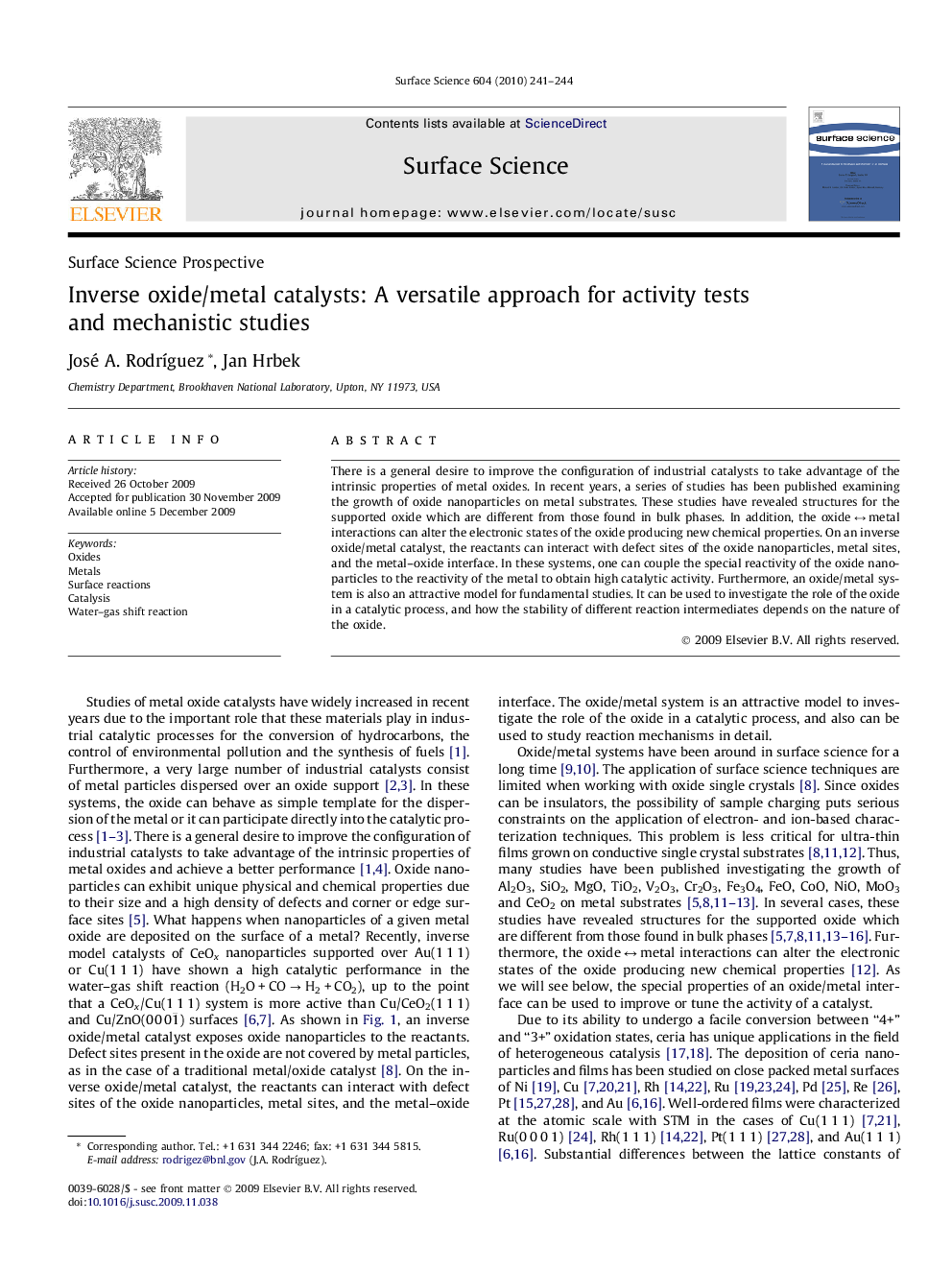| Article ID | Journal | Published Year | Pages | File Type |
|---|---|---|---|---|
| 5424119 | Surface Science | 2010 | 4 Pages |
Abstract
There is a general desire to improve the configuration of industrial catalysts to take advantage of the intrinsic properties of metal oxides. In recent years, a series of studies has been published examining the growth of oxide nanoparticles on metal substrates. These studies have revealed structures for the supported oxide which are different from those found in bulk phases. In addition, the oxide â metal interactions can alter the electronic states of the oxide producing new chemical properties. On an inverse oxide/metal catalyst, the reactants can interact with defect sites of the oxide nanoparticles, metal sites, and the metal-oxide interface. In these systems, one can couple the special reactivity of the oxide nanoparticles to the reactivity of the metal to obtain high catalytic activity. Furthermore, an oxide/metal system is also an attractive model for fundamental studies. It can be used to investigate the role of the oxide in a catalytic process, and how the stability of different reaction intermediates depends on the nature of the oxide.
Related Topics
Physical Sciences and Engineering
Chemistry
Physical and Theoretical Chemistry
Authors
José A. RodrÃguez, Jan Hrbek,
